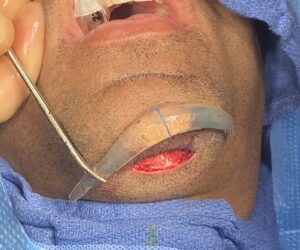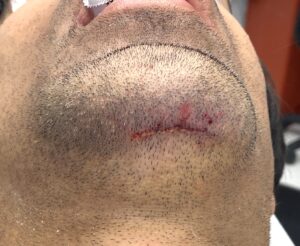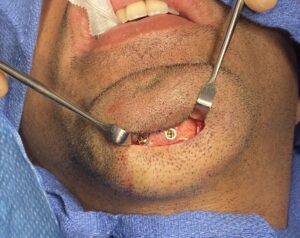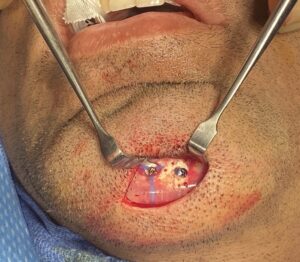Augmenting the chin with a sliding genioplasty is an autologous approach that has its distinct advantages. But when it comes to picking what the dimensional bony changes should be, particularly in the horizontal direction, it is not an exact science and is fraught with some of the same potential uncertainties as choosing the size of a chin implant. This it is always possible that there is too much or not enough projection provided by the bony change.
If the chin is overprotected there is little option but to redo the osteotomy and set the chin back to a less projected position. But when there is not enough forward projection there are other options than redoing the osteotomy to move it further forward. Depending upon how much additional projection is needed, usually 5mm or less, the bone does not need to be removed to achieve the increased projection.
The chin implant overlay concept is where a chin implant is added on to the bone just like a traditional chin implant. How much projection can be added depends on how much the chin bone was initially moved and how thick and flexible the soft tissue chin pad is. Large initial sliding genioplasties will have more limits in chin implant sizes than smaller sliding genioplasties as the soft tissue chin pad has been stretched more.


Once the pocket dissection is done ensuring that it goes past the bony stepoffs so all scar tissue is released, the implant can be inserted and positioned. Screw fixation is absolutely going to be needed. The plate screws can be removed, the implant placed over the plate holes and the screws inserted through the implant and back into the existing threaded screw holes. Midline positioning is key and the bony genioplasty and its plate may not always be perfectly in the midline. But the implant needs to be. It is also possible that there may be a tilt to the chin bone from the genioplasty so the chin implant may need to be adjusted for that tilt and screws placed as needed to hold the implant in a completely horizontal orientation.
Dr. Barry Eppley
World-Renowned Plastic Surgeon




